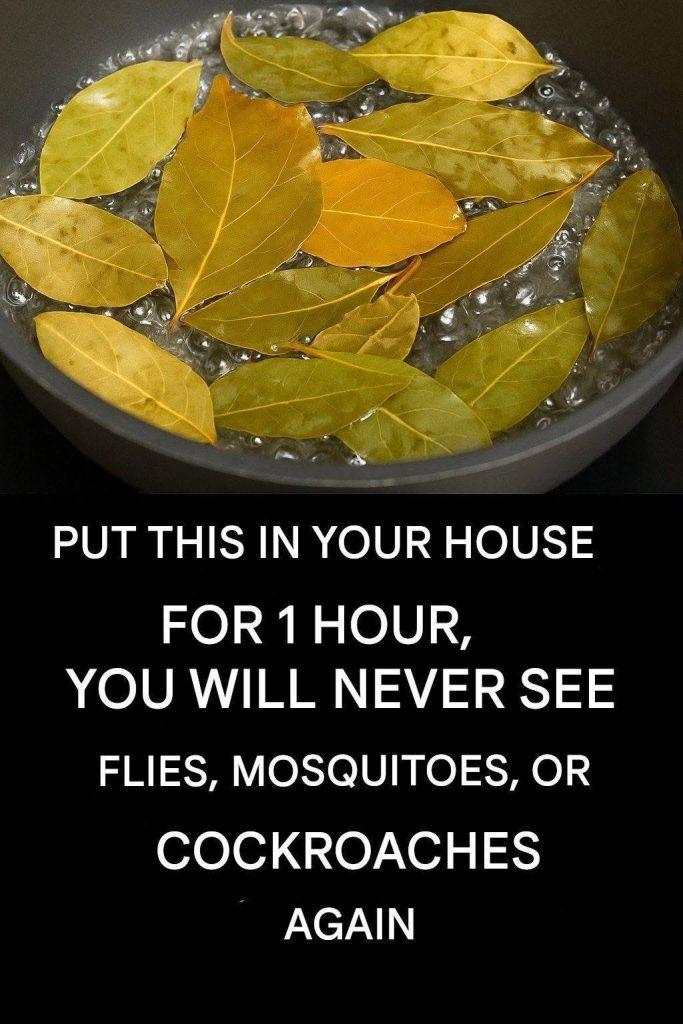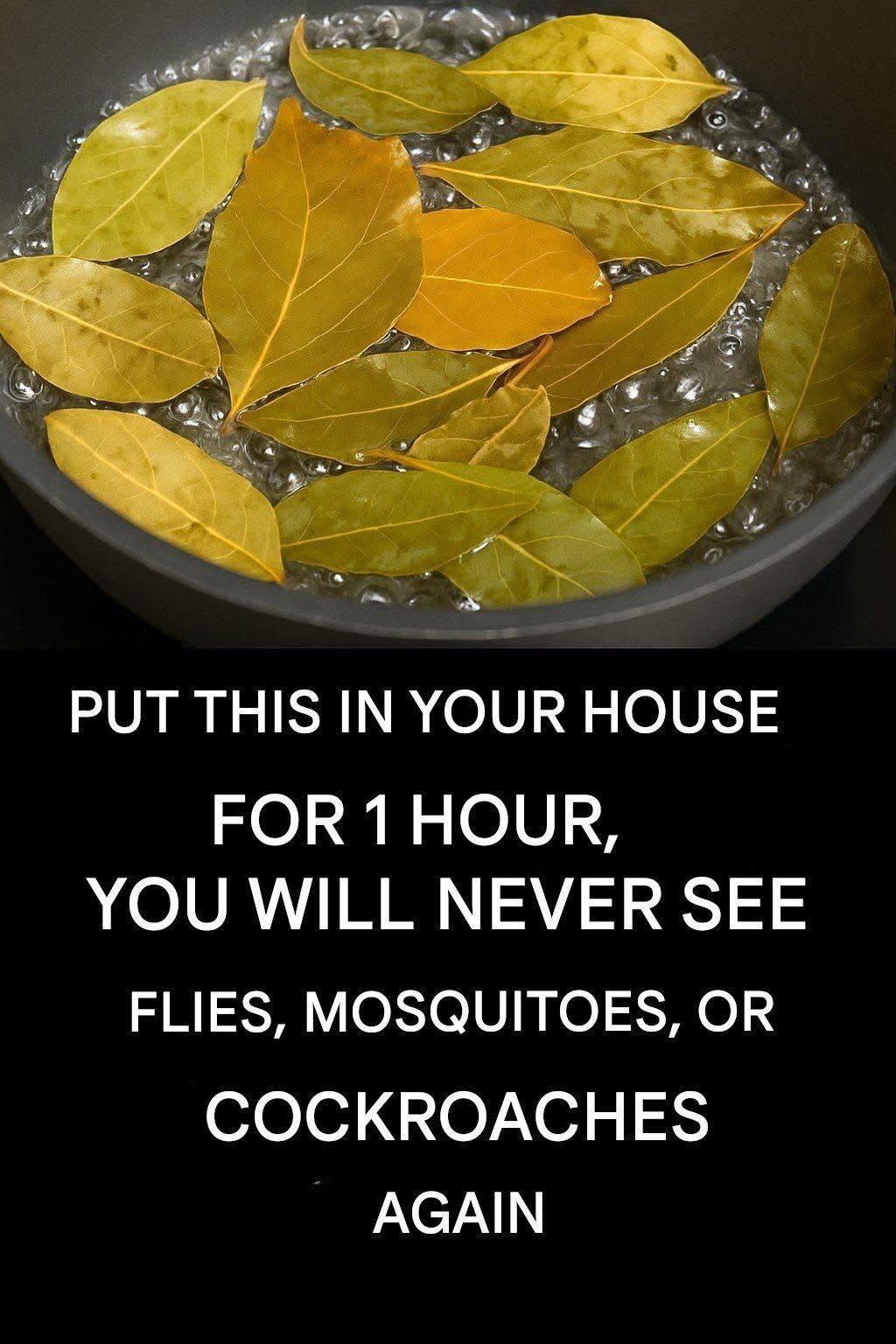
Natural Bay Leaf Bug Repellent: Full Recipe & Guide
Introduction:
Bay leaves, known for their aromatic scent and culinary uses, are also rumored to repel pests due to their essential oils, especially eugenol, myrcene, and linalool—all of which are mild insect repellents. This natural remedy is popular in traditional homes and among people seeking chemical-free alternatives.
Ingredients:
- 10–15 dried bay leaves (Laurus nobilis)
- 4 cups of water
- 1 small saucepan or pot
Instructions:
- Boil the Water:
- Pour 4 cups of water into a saucepan and bring it to a rolling boil.
- Add Bay Leaves:
- Once boiling, add the bay leaves into the water.
- Reduce heat and simmer for 10–15 minutes to allow the oils to release.
- Let the Aroma Spread:
- Place the hot pot (carefully) in a central room (e.g., kitchen or living room) and let the steam diffuse naturally.
- You can also pour the mixture into a heat-safe bowl for easier placement.
- Optional: Enhanced Repellency
- Add 1 teaspoon of cloves or rosemary to the boiling mix for a stronger scent.
Method Options:
- Stovetop simmer: Works for open-space diffusion.
- Essential oil diffuser: Add bay leaf essential oil for a long-lasting effect.
- Burning dried bay leaves: An ancient method; produces a strong aroma but must be done safely.
- Bay leaf sachets: Place dried bay leaves in small cloth bags in cupboards or drawers.
History:
Bay leaves were revered in ancient Greece and Rome for their medicinal and protective properties. Traditionally, they’ve been burned to purify spaces and repel insects in Mediterranean households.
Claimed Benefits:
- Mild natural insect repellent
- May help with air purification due to antimicrobial compounds
- Non-toxic and safe for homes with children and pets
- Provides a pleasant scent
Realistic Expectations:
The claim that using this will make you “never see cockroaches, flies, or mosquitoes again” in just one hour is greatly exaggerated. Here’s the truth:
- Bay leaves can help deter pests, but only temporarily and not completely eliminate infestations.
- It’s a short-term solution best used in combination with proper hygiene and pest control.
- Cockroaches and mosquitoes are resilient and may need professional-grade treatments in severe cases.
Nutrition (for culinary use):
- Low in calories
- Contains antioxidants like eugenol and linalool
- Not eaten whole but steeped in dishes for flavor and aroma
Loved By:
- Natural remedy enthusiasts
- Eco-conscious households
- People avoiding synthetic chemicals
- Fans of traditional, herbal, or Ayurvedic methods
Formation (How It Works):
The steam from the boiling bay leaves releases volatile oils like:
- Eugenol: Repels insects and has antimicrobial properties.
- Myrcene: Aromatic compound often found in bug-repelling plants.
- Linalool: Found in lavender and basil, known to reduce insect activity.
These oils create an unpleasant environment for pests, making them leave the area temporarily.
Conclusion:
Using bay leaves as a natural bug repellent is a safe, simple, and aromatic method to gently deter pests like flies and mosquitoes. While it’s not a miracle cure, it’s a great support method alongside proper pest control and cleanliness.
